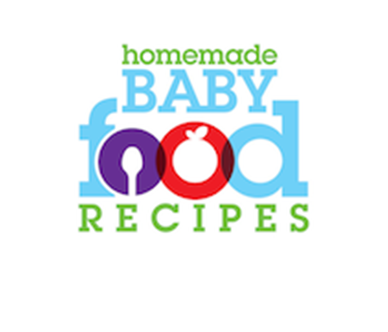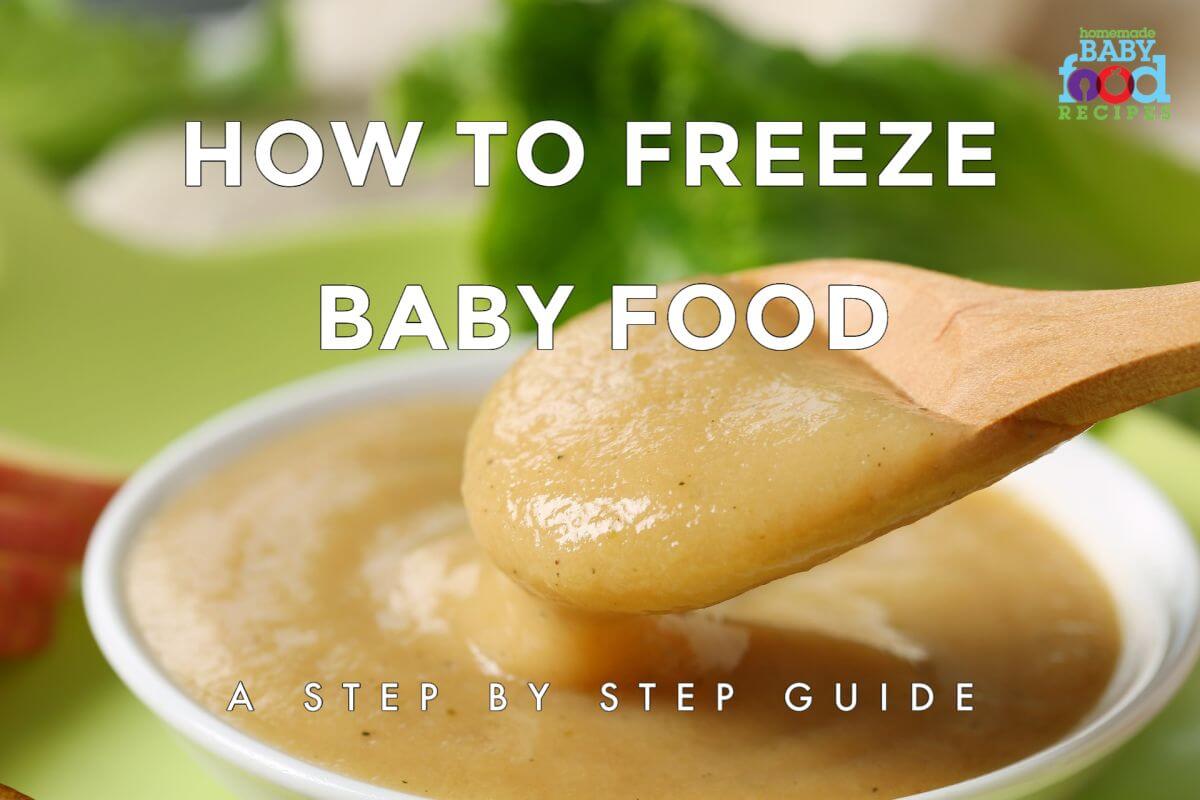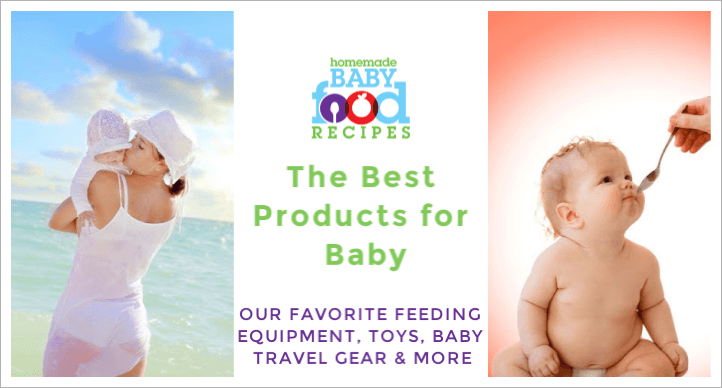How To Freeze Baby Food
Knowing how to freeze baby food safely makes it possible to prepare and store entire batches of homemade food for your baby – a real boon for busy parents.
How to freeze baby food – the basics
There are several methods of freezing baby food – all of which work equally well – but which may occupy varying amounts of freezer space.
With all methods…
…You should prepare your homemade baby food, then cool it as quickly as possible to prevent the growth of bacteria. Any food left sitting at room temperature for more than two hours is not safe for your baby to eat and should be discarded.
To cool prepared baby food quickly, try spreading it in a shallow container – you can even sit the container in a pan of cold water, which really helps speed up the process.
More information to help you prepare baby food safely and avoid the growth of food-borne bacteria
How To Freeze Baby Food – Method 1
Thoroughly clean a regular ice-cube tray and spoon your prepared baby food into each section.
A lidded tray is ideal, as it protects the food from freezer burn or from picking up any other odours from the freezer.
If you don’t have a lidded tray, you can cover the tray with food-safe plastic wrap. Some people use foil, although we don’t recommend it as you can find that some pieces of foil remain in the food!
Place the ice-cube tray into the freezer and – once the cubes are firm – press them out and place them into zip-top bags, which take up less space in your freezer.
This gives you perfectly sized little portions of baby food – usually around an ounce or so. One cube per meal may be enough for your child at first, but as he grows you may wish to place two cubes in each zip-top bag.
You can also make lots of different baby food flavours by mixing and matching different fruit and veggie cubes – combining a cube of pureed apple with a cube of pureed carrot, for example – yum!
ARE PLASTIC ICE CUBE TRAYS SAFE FOR FREEZING BABY FOOD?
There have been lots of concerns recently about freezing or heating baby food in plastic containers, because of the possibility of chemicals migrating from the plastics and into baby’s foods.
Some ice cube trays are specifically designed for baby food (see below) and are free of these potentially harmful chemicals – but if you want to use a regular ice cube tray, then you might like to try a silicone tray, or even one made from stainless steel!
How To Freeze Baby Food – Method 2
This is similar to method 1, because it involves freezing baby food then transferring it to zip-top bags – but instead of using ice cube trays, you can use silicone mini-muffin pans!
Their flexibility makes it easy to pop out the food portions – plus, of course, their use goes beyond the storage of baby food when your little one is older!
How To Freeze Baby Food – Method 3
If you don’t have any appropriately sized containers for freezing baby food, then you can use the baking sheet/cookie sheet method (although you’ll need a little more freezer space initially).
Just spoon your prepared baby food on to a baking sheet to form little mounds (although please note that this won’t work as well if your purees are very runny).
Cover the entire baking sheet with food safe wrap (or loosely cover with foil), freeze until firm, then transfer the portions of food to a zip-top bag as before.
How To Freeze Baby Food – Method 4
Another good way to freeze homemade baby food is by spooning it into freezer-safe jars and transferring the jars directly to the freezer.
Please note, though, that you should never freeze baby food in glass jars unless the manufacturers of the jars specifically state that it is safe to do so.
Jars that are safe to use in the freezer should clearly say so on the packaging – other jars (including commercial baby food jars) are usually not strong enough to withstand the expansion of the food that occurs during the freezing process.
This means that the jar may break or – worse – may experience tiny hairline cracks, which you may not be able to see, but which will deposit tiny shards of glass in your baby’s food.
Many parents like to use Ball Mason Quilted Jelly Jars (from Amazon), which are designed for use in the freezer.
How To Freeze Baby Food – Method 5
Probably the most popular method of freezing homemade baby food is to use ‘purpose built’ baby food freezer trays or pots – and boy, are there a lot to choose from!
Manufacturers, recognizing the growing trend for parents choosing to make their own baby food rather than relying on commercially prepared alternatives, have come up with a whole range of products designed to make life easier!
What’s more, these products are free from the potentially harmful chemicals that some plastic trays may contain.
How to freeze baby food – keeping track of what you’ve made
In our experience, most types of baby food – particularly purees – freeze very well.
You may sometimes need to experiment with texture, because the very process of freezing causes any water in the food to expand, breaking down cell walls. This is particularly noticeable when you freeze whole foods – a frozen banana, for example, will be very mushy when thawed – but is less of a problem when freezing prepared purees and meals.
Here are some tips we think you’ll find helpful…
- Don’t thin your purees before you freeze them. Given the fact that many foods become more watery on thawing (particularly fruits and veggies), adding extra liquid before freezing them may leave you with food that’s so runny your baby will need a straw to eat it! Here’s how to thin a puree that’s too thick when thawed and here are some tips for thickening purees that are too runny
- Herbs and spices tend to lose their flavour in the freezer. If a baby food recipe calls for them, add them after the food is thawed, just before heating it.
- Baked foods – like homemade nuggets or fish fingers – are best frozen at the point where they are ready for the oven, but before they are cooked. This is because the texture of the food (the crispiness of a nugget, for example) may be negatively affected by freezing then thawing.
- If you like to make your own yogurt, then it IS possible to freeze it for your baby. But do be aware that it might be watery on thawing. Sometimes, a good stir is all that’s needed to fix the problem – but on occasion we’ve found the resulting yogurt too runny to eat with a spoon and we’ve used it for smoothies instead! We’d recommend making homemade yogurt as and when needed, if possible.
- We’ve always had good results with freezing homemade rice cereal and oatmeal. In fact, being able to do so is a real boon when your mornings are as busy as ours! As we mentioned earlier, though, don’t make them too thin before you freeze them.
- Many fruits – particularly banana and avocado, and even apples and pears – can look quite brown when frozen and thawed. This discolouration is a natural result of the fruit’s exposure to air and is harmless, but if it bothers you, you can usually solve the problem by mixing a little lemon juice into the food before freezing it. Please note, however, that citrus sometimes triggers reactions in babies, in which case you may want to leave it out and accept a little discolouration!
- It is perfectly acceptable to freeze cooked rice, as long as it is cooled quickly beforehand. Please see this page for more information – Is It Dangerous to Reheat Rice?
- If your baby food contains cooked pasta – particularly if it’s a textured dish, where the pasta pieces are quite large – then we recommend slightly undercooking the pasta. Thawed pasta can be really mushy – but by undercooking it, you are allowing it to absorb the extra liquid produced during the freezing process without turning it into a mushy mess!
- If you like to make your own stock/broth, then it’s handy to prepare a big batch all in one go and freeze it. Try freezing it in ice cube trays or the baby food trays shown above – then you’ll have perfectly sized little portions of stock to use as needed.
- If your baby food has been affected by ‘freezer burn’, it may have tough, discoloured patches. These are caused by the food becoming dehydrated and by exposure to air – and it usually occurs when the food isn’t properly sealed or wrapped. Fortunately, though, the safety of the food is not affected – simply allow it to thaw, then cut or spoon away the affected area.
How to freeze baby food Q&A…
CAN I FREEZE MEALS MADE WITH PREVIOUSLY FROZEN FOODS?
Yes – you can use frozen vegetables or thawed meats to prepare your homemade baby food, then place these meals in the freezer to use at a future date.
CAN I FREEZE FOODS CONTAINING BREAST MILK OR FORMULA?
You can freeze foods containing breast milk, but you should never freeze any foods containing previously frozen breast milk, as this may be hazardous for your baby.
It is permissible to freeze purees and other baby foods containing freshly made formula.
Although the nutritional value is unaffected and it is not in any way dangerous to your baby, freezing may cause the fat in the formula to separate, so you might find that the texture or appearance of foods containing formula are a little different on thawing.
How to thaw baby food
The safest and easiest way to thaw your baby’s food is to select all the frozen cubes you’ll need for the next day, then put them in the fridge overnight. Frozen cubes of baby food take between 8 to 12 hours to thaw in most refrigerators.
It’s a good idea to mark the food with the time at which you took it from the freezer – we then recommend that you use up the food within 24 hours if it contains meat, poultry or fish – or within 48 hours for other types of food.
Never, never re-freeze thawed baby food, as this poses a risk of food poisoning to your baby.
More information about safely heating baby food
If you have any comments, questions or tips about how to freeze baby food, then please do contact us – we’d love to hear from you!
Useful links…
Simple pureed baby food recipes
Should I peel fruits and vegetables for my baby?


